Back-to-school lessons from tomorrow’s top marketers
As the summer holidays draw to a close, the Marketing Academy’s class of 2014 share their visions of the future of marketing.
Even at the top of their profession senior marketers can’t afford to stop learning. For many, the most fruitful source of future insights is the young marketers in their ranks, who are likely to be tomorrow’s chief marketing officers and chief executives.
They have had a career development very different from their bosses, thanks to rise of digital technology, and they see no let-up in the relentless and radical changes it has brought.
Scholars at the Marketing Academy, which is supported by Marketing Week, have given us their predictions for the future trends to watch in the industry. The scholars consist of marketing managers from brands including L’Oreal, Danone, British Gas and Aviva.
Their responses do not always tally with the predictions of more senior marketers[1], collected by Marketing Week at the end of last year, which tipped 3D printing and native advertising as influential innovations. While the scholars emphasise the need to keep ahead of technological developments, they also express caution about wearable technology.
However, the trends they identify signal their belief that the marketer’s role is changing as brands adapt to evolving consumer habits. Even today, research identifying different types of marketers conducted by SAS and Marketing Week shows that 9 per cent fall into a group which focuses on tried and tested digital channels of website, search, email and online ads; while SoLoMo (social, local, mobile) marketers, who focus on the latest media channels, make up 19 per cent.
A report by Accenture, based on a survey of more than 580 senior marketers globally, finds that more than a third believe that digital will account for 75 per cent of their marketing budgets[2] by 2019, while 35 per cent say mobile will account for more than 50 per cent.
This digital transformation underpins the following seven lessons that the scholars have for their peers and superiors.
Lesson 1: Relax brand controls

- 30 per cent of the time millennials spend consuming media is with user-generated content, according to Ipsos MediaCT
- UGC is 50 per cent more trusted than other media and 35 per cent more memorable, it finds
“Brands will have to let go of the control they have over their brand communications and platforms, co-curating content with their consumers,” says Emily Byrne, marketing director at L’Oreal Designer Fragrances.
She claims that the future will be crowd-sourced, with brands gaining loyalty from their customers by producing and gathering content that is relevant to them. What’s more, brands will give customers platforms to generate their own content, with the aim of creating more rewarding experiences that keep them coming back.
This trend is spurred by increasing consumption of digital media, says Natasha Pergl, digital marketing consultant at IT and outsourcing company Capgemini. “We’ll see increased collaboration between marketers and consumers as the use of digital tools grows within organisations, and increased co-creation of new products,” she says.
Sarah Cowl, content marketing manager at Aviva, says development of this trend will depend on whether brands can be “comfortable with giving up some control in order to benefit from the credibility of content created by people who love what they offer, while also accepting that some negative sentiment is part of this too”.
Relaxing brand control also makes demands of brands’ internal communication, requiring departments to come together with a shared goal of providing consumers with more value from products and services.
CASE STUDY: McDONALD’S
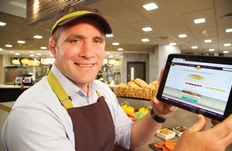
McDonalds is ramping up its personalised experiences to build up customer relationships[3]. The fast-food brand is running a campaign asking fans to design burgers and put them up for vote, to potentially appear on the menu at over 1,200 restaurants in the UK this autumn.
Rugby player Phil Vickery will join a panel including McDonald’s representatives, an independent expert and a member of the public to judge the best burgers.
Emily Byrne, group manager at L’Oreal Designer Fragrances, says: “Gone are the days where we can put out brand-led advert after brand-led advert, as consumers now expect to be able to engage with their favourite brands in real time.”
Lesson 2: Humanise the brand

- Brands that behave like humans find more favour with consumers[4], according to research by Lippincott
- Research by Momentum Worldwide shows that 54 per cent of consumers feel an emotional distance from UK brands
Being a ‘human’ brand needs a move towards transparency and away from consumer cynicism, according to the Marketing Academy scholars.
Esmé Rodger, Oykos brand manager at Danone, says: “We’re seeing many businesses trying to promote the more human side of their brands at the moment.”
This is because consumers are not just buying a brand but a lifestyle, and Microsoft Mobile global retail marketing manager Joly Zou sees more co-branding, partnership or associations between companies around aspects of lifestyle (see Disney case study below).
Another way to humanise a brand is to remove secrecy about the business and open it to scrutiny. “Consumers and brands are increasingly faced with more channels and content removing previously held secrets,” says Muiris Ó Riada, marketing manager at William Grant & Sons. “The most successful will be those that embrace transparency.”
Transparency also means having a point of view and welcoming conversation, according to Ó Riada, who sees a trend in this direction as “the only way to overcome [consumers’] scepticism and grab attention in a world of increasing digital choice and distraction”.
CASE STUDY: DISNEY AND CHANGE4LIFE

Disney’s partnership with Change4Life[5], where the brand’s characters feature in a campaign to encourage children to get active this summer, is an effort to humanise the Government’s health campaign through a partnership that appeals to its young target audience. The activity includes distributing activity packs for children incorporating stickers, cards and stopwatches.
According to Joly Zou, global retail marketing manager at Microsoft Mobile, humanising a brand is not about selling a USP or a feature. “As a brand we need to fit into consumers’ lifestyle first of all.”
Lesson 3: Maximise converged content
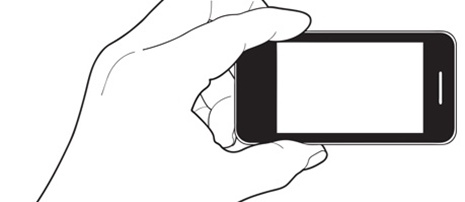
- 70 per cent of marketers use content marketing according to the Content Marketing Association
- The share of communications budgets spent on owned media increased 25 per cent each of the past two years, it adds.
Steven Woodgate, social media manager at Microsoft, believes that the next step for content is to promote it using a paid-for social media strategy. It is becoming clear that brands such as Carlsberg (see case study below) are moving more of their marketing budgets towards social and using the channel for this purpose.
Social media is not the only determining factor in the evolution of content: others include appealing to the next generation, taking advantage of mobile and understanding coding.
Amanda Lowe, head of communications at Marketing Birmingham, believes these three areas are where marketers will see biggest change in the future. “Content creators are vying over who is the ultimate creator,” she says, giving the example of whether BBC iPlayer can beat Netflix for viewers. “The next generation won’t know what it is to have an appointment- to-view programme. Content will be consumed by mobile more than any other means in the coming years.”
She adds: “Marketers need to have an understanding of coding if we are to engage with developers in our creation of content that can be used on mobiles, smart TVs and more.”
CASE STUDY: CARLSBERG

Carlsberg is one brand transferring much of its content budget to social media, at the expense of TV advertising. As part of its sponsorship of the Premier League it is building a hub[6], developed in partnership with The Marketing Store, which tracks potential viral content from football fans to amplify across its own channels.
Rather than taking its previous approach of prioritising the start of the season for the biggest slice of its media activity, Carlsberg is taking a more reactive and short-term approach to planning this year.
Lesson 4: Get ahead of technology
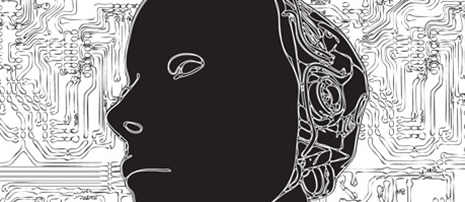
- Between 2009 and 2012, the number of technology and digital companies in London increased 76 per cent
- Up to 75 per cent of display advertising will be bought with programmatic technology by 2017, the IAB predicts
Development in technology, accompanied by rapid changes in media consumption and consumer behaviour, can create opportunities for marketers but also means there are threats that need attention.
ITV sees a huge drive to embrace technology to support and enhance the customer journey with digital and TV converging in the future, although this is not without its difficulties, according to head of commercial marketing for broadcast Rachel Compton.
She says: “It’s important to stay ahead in this area but often difficult as technology and marketing departments don’t necessarily work hand in hand.”
She adds: “Everyone has realised that a client’s media strategy should transcend media, telling a coherent story across all channels.”
Jack Lowman, marketing manager at The Prince’s Trust, believes that these brand stories will no longer be told traditionally, but that “they will be rolled out using technology with which every marketer needs to be familiar”.
“From programmatic advertising[7] and remarketing to gamification, the opportunities are more vast and exciting than ever before. The question is are we ready for them?” he says.
Charlotte McDonnell, Thomson and First Choice national advertising manager at TUI, argues that due to the advertising formats available, “it is mainly direct response activity served through these platforms” at present, but she sees this broadening in the future to allow a wider range of messages and strategies to be put to work through emerging channels.
“Brand-focused advertising will be a driver of the rising spend when a wider range of programmatic ad formats become available,” she says.
CASE STUDY: OCULUS RIFT
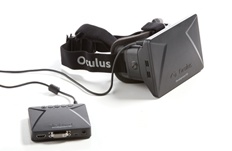
After experiencing Oculus Rift for the first time at an industry conference, The Prince’s Trust’s marketing manager Jack Lowman realised how the virtual reality visor has the potential to open up “endless creative opportunities for brands”. Yet he also believes it has the potential to make marketers restless and too concerned with what they need to do to constantly be part of technological developments.
Facebook announced the acquisition of manufacturer Oculus VR for $2bn in March, but as with other wearable technology such as Google Glass[8] and Samsung’s Galaxy Gear smart watch, neither the level of consumer uptake or the marketing applications are yet clear. But that doesn’t mean marketers can afford to be behind the times in their awareness of innovations.
Lesson 5: Take more risks

- Brands becoming more reactive can capitalise on 58 million consumer tweets per day.
- 74 per cent of brands using social media 40+ hours a week say it wins new business, according to Social Media Examiner
Philip Raperport, marketing manager for BBC Four arts and music, believes it is his job to make sure the TV channel takes every chance to demonstrate and communicate its fearlessness to its audiences, noting that the content needs to lead the way.
“BBC Four has the opportunity to be bold, take risks and become renowned as the most innovative multi-genre BBC channel,” he says.
Katie Crossfield at Yo! Sushi concurs that risk-taking is not only unavoidable but desirable for the next generation of marketers: “One of the best pieces of advice I once received was ‘without risk, there is no gain’. So although making those big decisions can sometimes be scary, they can also be the ones that pay off the most.”
For any brand, the path to taking these risks is universal according to Raperport: “Whether you’re in broadcasting, FMCG or retail, the solution to this challenge is the same – cement your brand’s personality, underpinned by a clear set of values, and be versatile and reactive.”
CASE STUDY: PADDY POWER

Paddy Power constantly takes risks, for example by tweeting an image of trees supposedly cut down in the Amazon rainforest to spell out ’C’mon England’ in the run up to the 2014 FIFA World Cup. Although the photo was a fake, the bookmaker received a barrage of negative tweets but turned the situation on its head with a follow-up message making it clear the stunt was intended to raise awareness of deforestation in the Amazon.
The risky strategy pays off for the brand because it is consistent in its reactive content, although it sometimes sails too close to the wind. Regulators banned one ad[9] for offering free bets if Paralympian Oscar Pistorius was acquitted of murdering model Reeva Steenkamp.
Lesson 6: Stay ahead of gen Z
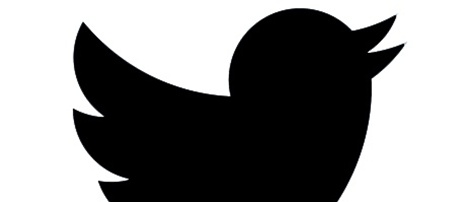
- Ofcom data shows 14- to 15-year-olds are the most tech-savvy UK consumers
- 62 per cent of millennials are members of two social networks, according to Vizeum
Keeping up with what the next generation is doing has always been a marketer’s job, but it has never been more difficult than it is today.
Rodger at Danone believes the greatest challenge in planning for the next generation’s consumer behaviour is the element of the unknown.
“While we can hypothesise about the expectations of consumers who have grown up during the explosion of digital technology and the world of consumer convenience, it is still difficult to predict how we need to shape our products to appeal to rising groups who will probably have the highest expectations of consumers to date,” she says.
Consumption behaviour, particularly around technology and media, is important to follow. Zou at Microsoft says: “Young consumers are less patient and more difficult to impress, so reaching them requires excellent content, the right media and the right timing. Once the door is open, the investment can create huge returns.” She summarises the mindset through one young girl’s comment during a research session: “I do not ever read news. If anything is interesting enough, it will find me.”
CASE STUDY: TWITTER
Around 58 million tweets are sent each day and 9,100 per second. Twitter has fundamentally changed the way people consume media, from breaking news to viral content and even as a customer service platform for many brands to connect with customers. This behaviour is strong among young, tech-savvy consumers.
After speaking to his eldest son, Marketing Week’s Secret Marketer[10] was interested to find out about his media consumption habits. He says: “Firstly, he just does not do email. He doesn’t have an email address, and sees no need to ever have one – he can do all he needs on text and social media.”
Lesson 7: Merge data with creativity
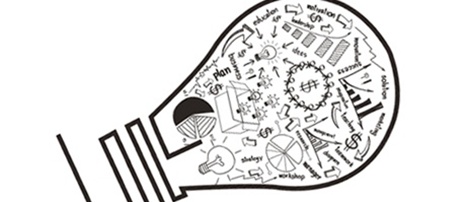
- A study by EMC Corporation reveals that the average household creates enough data to fill 65 iPhones per year and by 2020 this will increase to 318 iPhones
- EMC also finds that the digital data produced annually doubles every two years and will multiply 10-fold between 2013 and 2020
Data, and understanding and using it effectively, is a universal issue for marketers already. An overlay to this is how it will need to be used in future to develop marketing messages and to design services to meet consumers’ immediate needs. But as brands become more rational, using data to back up campaign strategy and target their market segments effectively, does creativity lose out?
This is an area where the Marketing Academy scholars predict an increase in collaboration between the ‘science’ and ‘art’ components of the marketing discipline.
Cowl at Aviva says: “Big data is a term that’s thrown around a lot but its so much more than the latest saying.”
Tom Probert, senior marketing manager at Dyno Services, part of British Gas, believes that there’s also a trend in understanding how to balance the proliferation of data with creativity, so that the overall consumer experience is not too rational and still captures the imagination of the target audience.
“When I see the likes of Google buying Nest or listen to a huge number of middle-aged marketing professionals talking with passion about Nike Fuel band there must be some future in it.”
CASE STUDY: NIKE
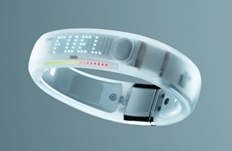
Nike launched Fuel Band in 2012 creating a product that stands as the epitome of how brands are combining data and creativity.
Fuel Band measures motion and translates it into a unit called NikeFuel, so that a user can set a goal level for exercising. The band’s data syncs through a built-in USB or wirelessly through Bluetooth to a free iPhone app, to record activity each day and track progress.
Tom Probert, senior marketing manager at Dyno Services, part of British Gas says: “Connected technology has become an amalgamation of data and creativity, leveraging data to deliver content-rich experiences.
Find out more about all these themes at the Festival of Marketing on 12-13 November at Tobacco Dock, London. For more details, visit festivalofmarketing.com[11].
References
- ^ predictions of more senior marketers (www.marketingweek.co.uk)
- ^ believe that digital will account for 75 per cent of their marketing budgets (www.marketingweek.co.uk)
- ^ McDonalds is ramping up its personalised experiences to build up customer relationships (www.marketingweek.co.uk)
- ^ Brands that behave like humans find more favour with consumers (www.marketingweek.co.uk)
- ^ Disney’s partnership with Change4Life (www.marketingweek.co.uk)
- ^ As part of its sponsorship of the Premier League it is building a hub (www.marketingweek.co.uk)
- ^ programmatic advertising (www.marketingweek.co.uk)
- ^ Google Glass (www.marketingweek.co.uk)
- ^ Regulators banned one ad (www.marketingweek.co.uk)
- ^ Marketing Week’s Secret Marketer (www.marketingweek.co.uk)
- ^ festivalofmarketing.com (www.marketingweek.co.uk)









